Wine Making at Home, Part 4: How to Stabilize and Back Sweeten Wine
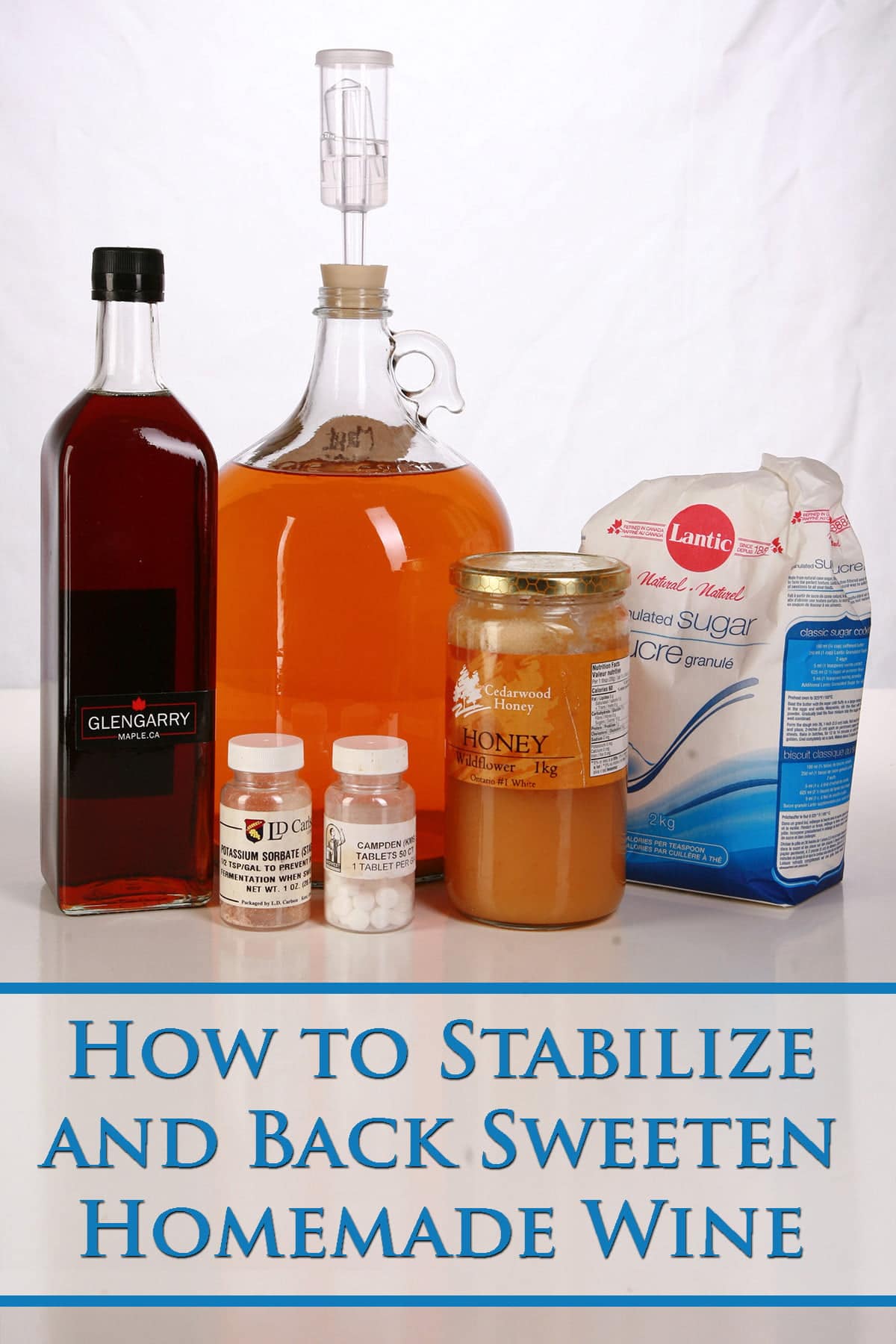
When making wine, cider, or mead at home, you want to know how to stabilize and back sweeten wine. Here's everything you need to know!
Getting Starting With Home Wine Making
This is the 4th post in our series of how to make wine at home, and will teach you how to finish your wine, before bottling.
Our first three posts in the series are below:
- Wine Making At Home, Part 1: Why?
- Wine Making at Home, Part 2: Equipment to Get Started
- Wine Making at Home, Part 3: The Brewing Process.
Just a small handful of entries, and you'll be good to go!

What Does It Mean To Stabilize And Back Sweeten Wine?
Stabilizing Wine
Stabilizing a wine is when you add a chemical to prevent fermentation from starting up again.
Stabilizing is an important step to take before back sweetening your wine, as sweetening your wine is likely to restart fermentation.
Sugar feeds yeast, after all. Putting more sugar in a carboy of still wine is like shaking a box of cat treats in a house with sleeping cats. They may LOOK dormant, but they will very quickly go active at the promise of treats!
While this may be desirable at times - maybe you’re specifically aiming for a higher ABV - eventually you’re going to want to cut the yeast off, for good.
Stabilizing your wine is something that’s usually a good idea to do, whether or not you’re back sweetening it, as a kind of safety precaution / insurance for your wine.
You see, sometimes when you bottle your wine, you disturb residual yeast enough to “wake it up” again.
We’ve had wines that we’ve racked off sediment several times, til is was visibly “clean”. It can sit still - no fermentation activity at all - for months... That reactivated upon bottling.
Sometimes - if you’re keeping them in kegs, or in beer bottles - this isn’t a problem. You’ll end up with a carbonated wine, cider, or mead - they can be fun!
However, regular wine bottles aren’t made to sustain the pressures of a fermenting wine, and can explode.
Not only does this make a huge mess, you’ll lose the wine you’ve been patiently waiting on.
While we haven’t had a bottle explode, ourselves - knock on wood - our first batch of Mint Wine gave us a bit of a scare.
We hadn’t stabilized it (whoops!), and it carbonated in the regular bottles we’d racked them to. The “Zorks” corks we were using all started splitting.
So, we went out of our way to use the wine sooner rather than later, and considered it a lesson learned!
When Do You Stabilize Wine?
While it sounds almost redundant, you want to wait until the wine has stabilized, before you stabilize.
What I mean by that is, you don’t stabilize an active wine.
Let it work its way through active fermentation, rack it a few times, let it clarify (Haze / cloudiness can be suspended yeast - wait it out!), and let it rest.
When it’s gone a month or more with NO activity - no bubbles, no new sediment, etc - that’s when we tend to stabilize it.
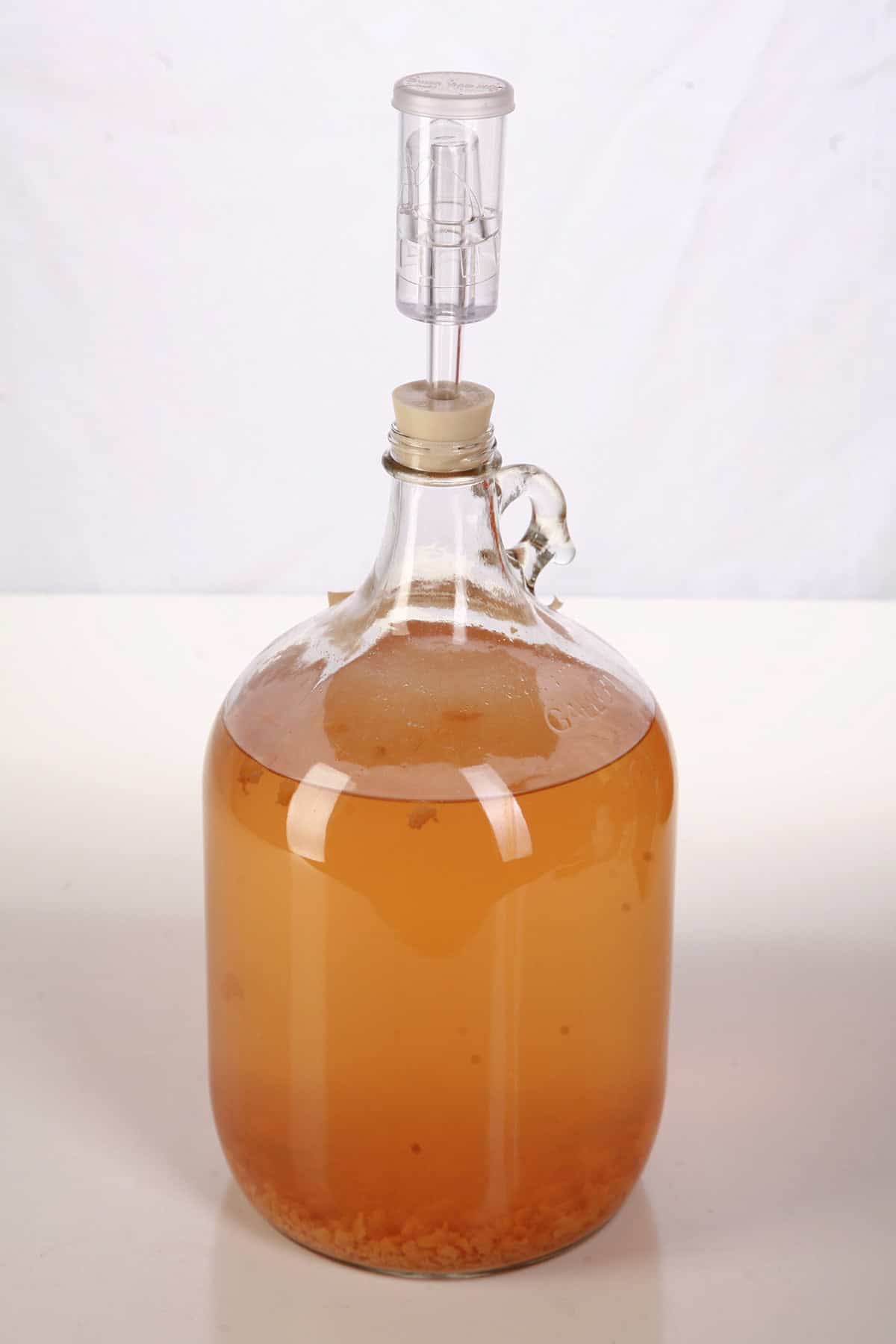
This is a wine that is still actively fermenting, and is not ready to be stabilized.
Stabilizing an Active Wine
A bit more on “You don’t stabilize an active wine”:
Stabilizers will not stop an actively fermenting wine, they can only slow it down a little - and temporarily.
Stabilizers don’t kill off yeast, and don’t stop active fermentation from happening. Stabilizers coat the yeast cells to prevent them from multiplying.
Theoretically, adding stabilizers to active fermentation may shorten the active fermentation time eventually. Again - in theory. Theoretically the active cells will stop reproducing, and when they die off, you’re done.
In practice... most people don’t notice a difference. So, just wait until fermentation is done!
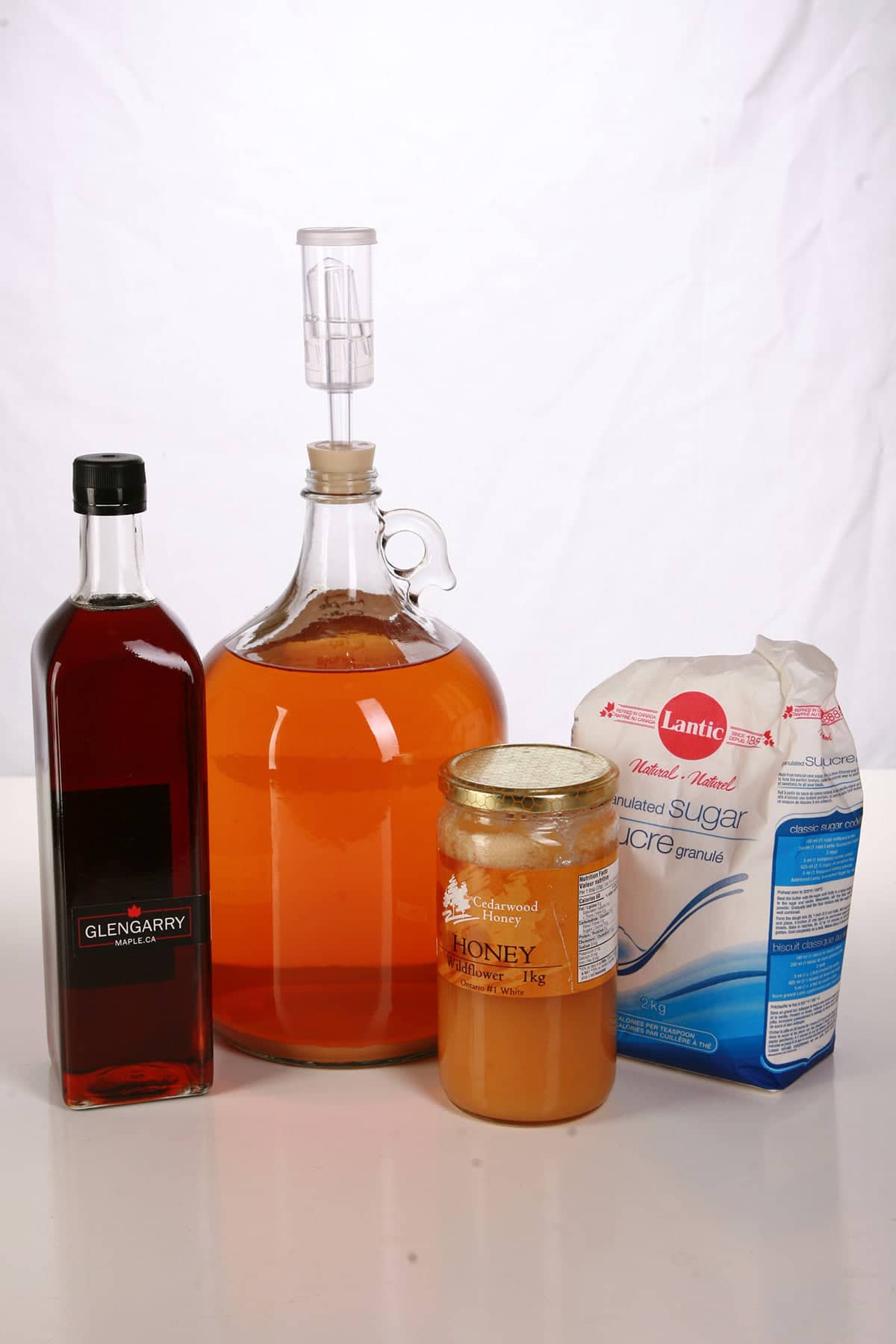
Back Sweetening Wine
Back Sweetening Wine is simply adding a sweetener to a wine that has finished fermenting and has been stabilized.
How much you add will vary wildly based on what kind of wine you’re working with, how dry it got, and what you’d like the final wine to taste like.
You can add very small amounts to simply take the edge off an *incredibly* dry wine, leaving it as a dry wine.
You can add a reasonable amount to bring out the flavour in certain wines - this is especially important with lighter-coloured non-grape wines, in our experience.
Many fruit based wines really don’t taste like anything, unless you add a bit of sweetener.
Add a bit of sugar, and the bland, flavourless wine suddenly tastes like strawberries, peaches, watermelon, or whatever fruit it was that it started with!
Finally, you can add a fair amount of sweetener to create a very sweet dessert wine.
Or, you can always bottle some dry, add a bit of sweetener to the carboy, bottle some semi-sweet, add more sweetener, and bottle some as a dessert wine. You can get several “different” wines off one batch, this way!
It’s all up to you, what you’re looking for!

When Do You Back Sweeten Wine
You can back sweeten wine after it’s been stabilized, and after you’ve waited the required time after you’ve added the stabilizing component(s).
More on that in a bit!
How to Stabilize Wine
First and foremost: While I’ll give a general idea of how this is done, you should always consult the packaging on the stabilizer you are using.
Different stabilizers, different brands, and different strengths can require slightly different handling.
Secondly: Use the least amount of stabilizer that you can for the quantity of wine you’re stabilizing. Don’t throw extra in “to be extra sure” or anything!
Anyway!

- Sanitize a clean carboy, the same size as the one your still wine is currently sitting in. Also, sanitize your siphon, siphon tubing, etc.
- Rack the wine over one final time.
- Add your choice of stabilizer - following the directions for it - swirl the carboy a little to mix it in.
- Allow the wine to sit for at least 12 hours (ideally severally days) before doing anything else (back sweetening, bottling)
What is Potassium Sorbate?
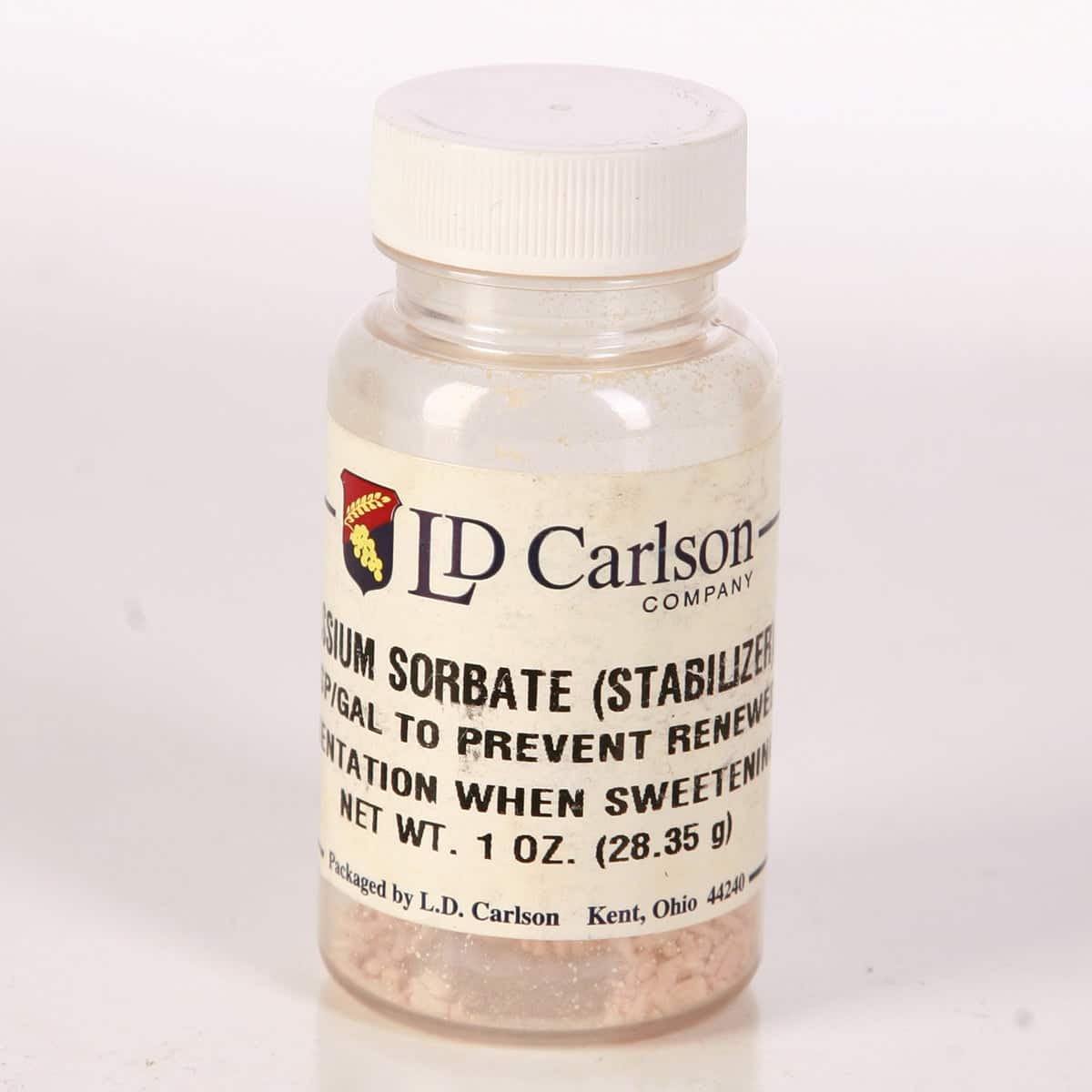
Potassium Sorbate is a chemical that is added to foods to preserve the “life” of them. It does this by blocking the growth of certain microbes - mold/fungus, and yeast.
It’s how it’s possible to, for example, buy shelf-stable juice. Without the addition of stabilizers, most juices would be either wine or vinegar by the time they sold.
As I mentioned in my Hard Apple Cider post, Potassium Sorbate - and related preservatives - are why it’s so important to buy cider *without* them, if you’re looking to ferment it.
What is Potassium Metabisulfite?
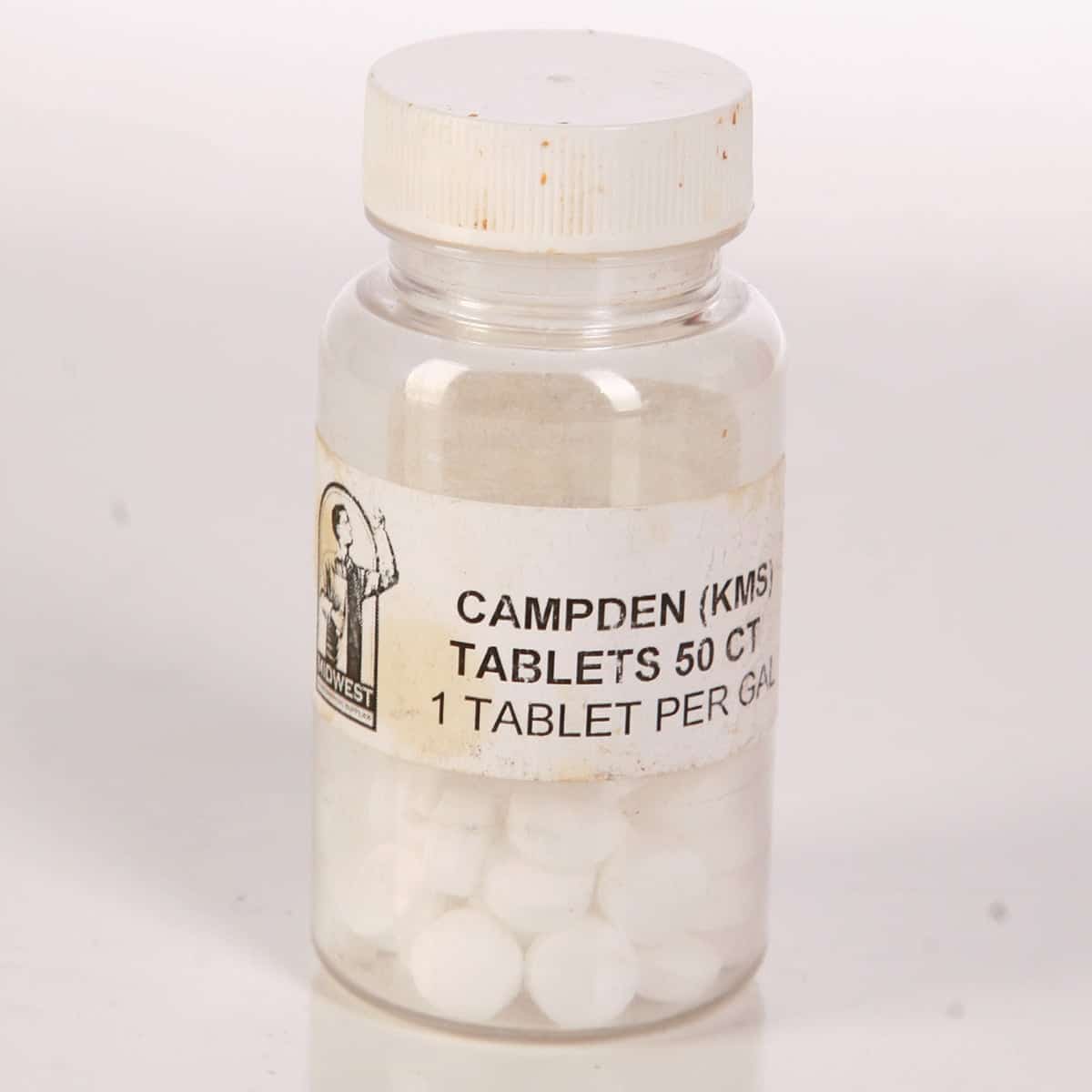
Potassium Metabisulfite - Commonly sold as Campden Tablets - is generally used in conjunction with Potassium Sorbate when it comes to stabilizing wines.
It roughs up the environment and “stuns” the yeast, whereas the Potassium Sorbate prevents the yeast from reproducing.
Basically, Potassium Metabisulfite holds the yeast down while the Potassium Sorbate castrates it.
... sorry.
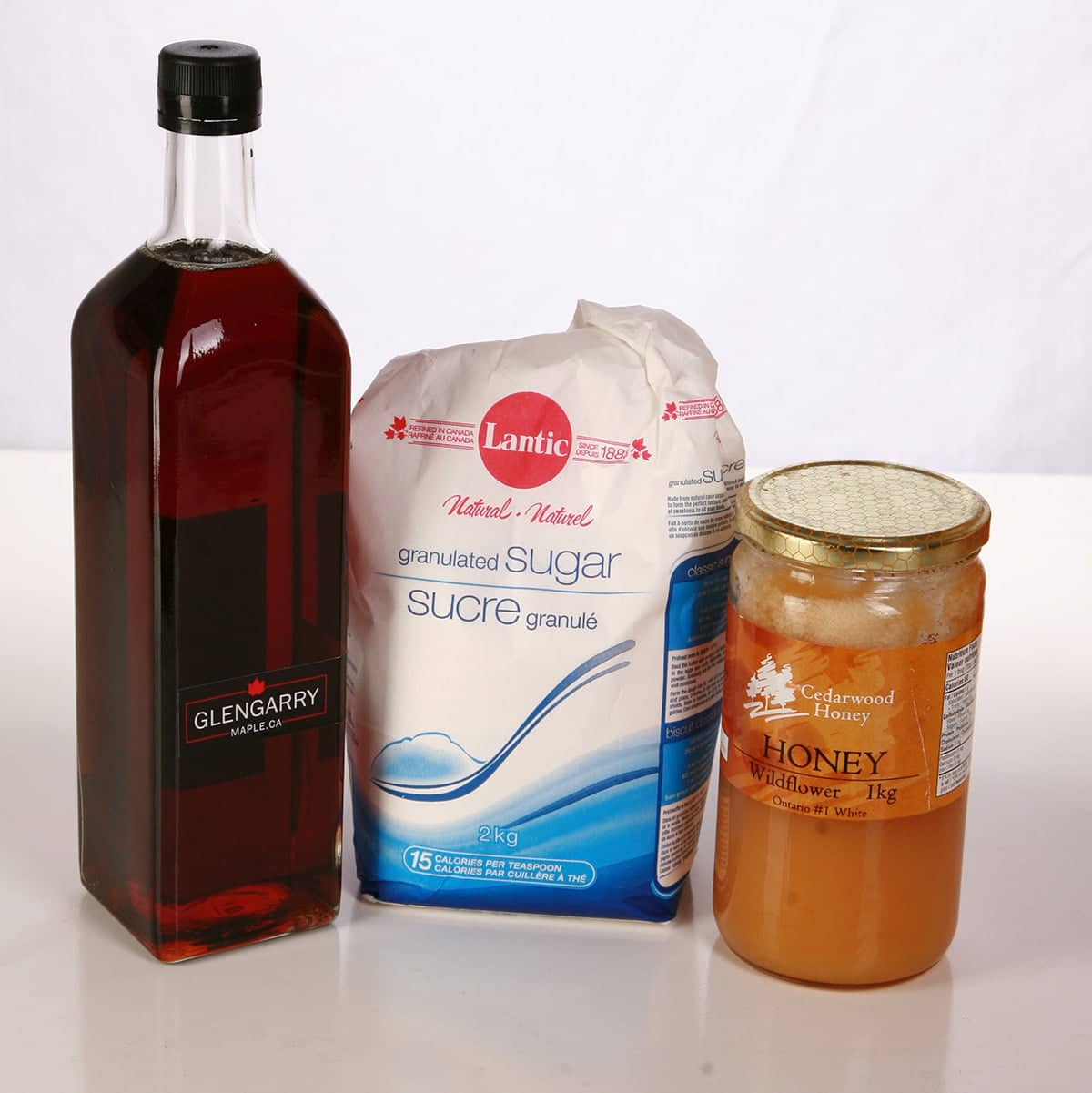
Preparing to Back Sweeten Wine
Choice of Sweetener
Before back sweetening your wine, you’re going to want to decide HOW you’re going to sweeten it.
There are a few options out there.
Keeping it Simple
Obviously, you can sweeten with the same sweetener that you started with. For many of our wines, this would mean granulated sugar.
If you’re making a mead, this would mean honey.
If you’re making a cider, you may want to use brown sugar, molasses, maple syrup, or even a combination.
Fruit Juice
Some people like to sweeten wine with fruit juice, or with frozen fruit juice concentrate. This is especially seen as the “proper” way to do it when it comes to grape wine.
We don’t tend to go this way, ourselves, though I can see the attraction - fruit juice will boost the flavour in a way that watered-down sugar will not.
BUT it also means having the juice you want on hand, and we’re not usually about that. Sugar is quick and easy, and - to be honest - we’re a bit lazy when it comes to such things.
If you are adding juice, two suggestions:
- Use the same juice you started with, or at least the same time. Apple juice in apple cider, grape juice in grape wine, etc.
- Make sure that any naturally occurring yeast is taken care of in your juice, before adding it to your wine. This could mean either using juice that comes stabilized, or simmering it for a bit to kill off any residual yeast.
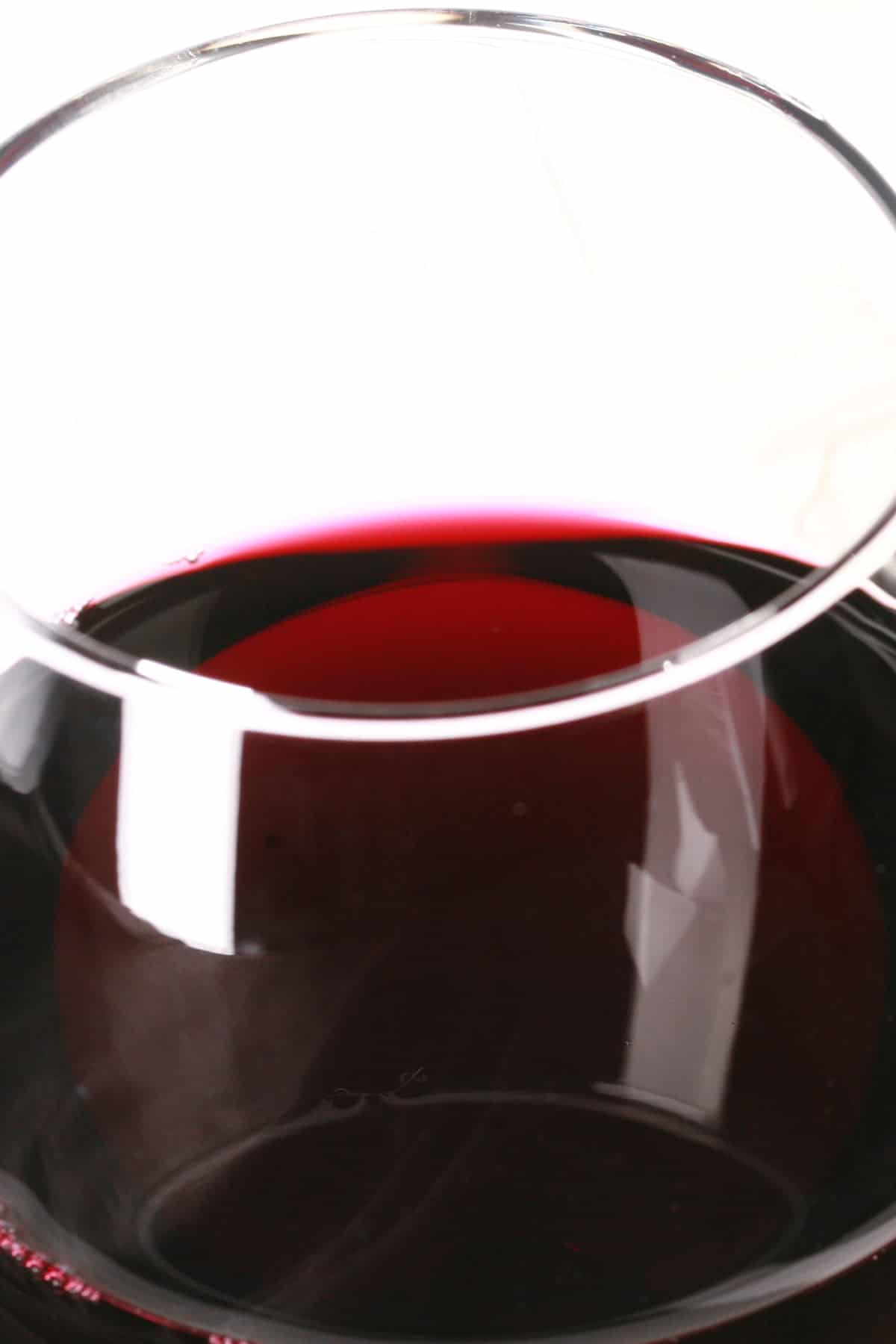
Glycerine
Glycerine is sold at home brew supply stores as an un-fermentable sweetener.
To be honest, we’ve never gone that way, and likely never will.
First of all, see the aforementioned laziness.
Secondly... I get that it’s supposed to be completely neutral in terms of flavour and smell, and I get that it’s already used in foods I eat.
... but something about adding glycerine to something I’m making *to eat or drink* kinda squicks me out. I see “glycerine”, I think “Soap”. It’s just not an appetizing option to me, based on that association.
Yes, I realize I’m probably being ridiculous.
Wine Conditioner
Finally, “Wine Conditioner” is another option that is sometimes available, depending on your access to homebrew supplies.
This is a product that is both sweetener and stabilizer in one, so you can actually skip the stabilizing... sort of.
This type of product comes with a caveat, though: If you’re using less than a recommended amount of the conditioner in a prescribed amount of wine, you need to add additional stabilizer along with it.
If you go this way, you’ll want to read the directions on your particular brand of conditioner, and follow them explicitly.

How to Back Sweeten Wine, Cider, or Mead
Now that I’ve written about 2000 words as a lead up, the actually back sweetening is actually incredibly easy.
Make Your Syrup
- First, mix a thick syrup with your choice of granulated or brown sugar, molasses, honey, maple syrup, or a mixture thereof. I like to go 2 parts of sweetener, to 1 part of water.
- Boil your syrup for a few minutes. You want your sweetener to dissolve, and you also want to sterilize it AND the water.
Sweeten your Wine, Cider, or Mead
How you do this is up to you, and will depend on logistics - how much wine do you have to sweeten, are you sweetening all of it or just part of it, etc.
Also: Do you want to wing it (we do!), or be more meticulous with it?
Wing It
Have the amount of wine you’re looking to sweeten in a single, sanitized vessel - usually the carboy you stabilized it in.
Use a sanitized Wine Thief, turkey baster, or siphon to get a bit of the wine in a glass.
Taste the wine, decide if you’re looking at needing a lot of syrup, or just a bit.
Eyeball it and add some syrup to the carboy. You’ll want to underestimate, if anything. You can always add more syrup, but you can’t *un* sweeten a wine you went overboard with!
Swirl the jug to mix it in well.
Get a bit more wine in a glass, test it out. Add more sugar if needed, repeat as necessary - just be sure to keep everything sanitary!
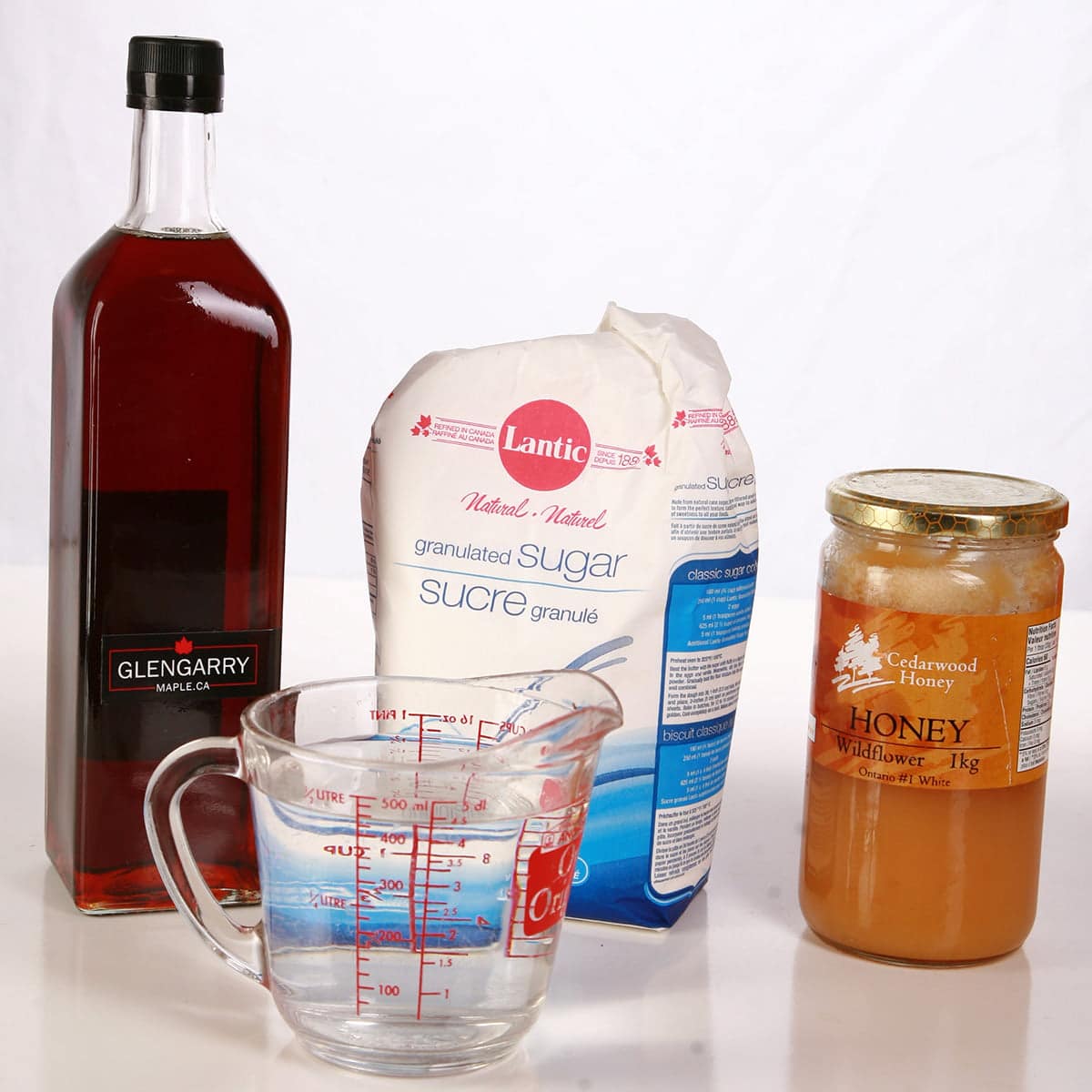
More Meticulous
- Know how much wine you have to sweeten.
- Using sanitized equipment, remove a measured amount - say 1 cup, for the sake of easy math - to a clean vessel.
- Add a measured amount of syrup to your measured wine, say 1 Tbsp. Taste, and add more syrup if necessary - keeping track of how much you add.
- Multiply the final amount of syrup you added to your glass, by the amount of wine you’re sweetening.
Example: If you liked the glass at 2 tablespoon of syrup, and you have 16 cups of wine left to sweeten, you’ll add 32 tablespoon - or about 2 cups - to the carboy.
- Add measured amount of syrup to the carboy, swirl well to combine.
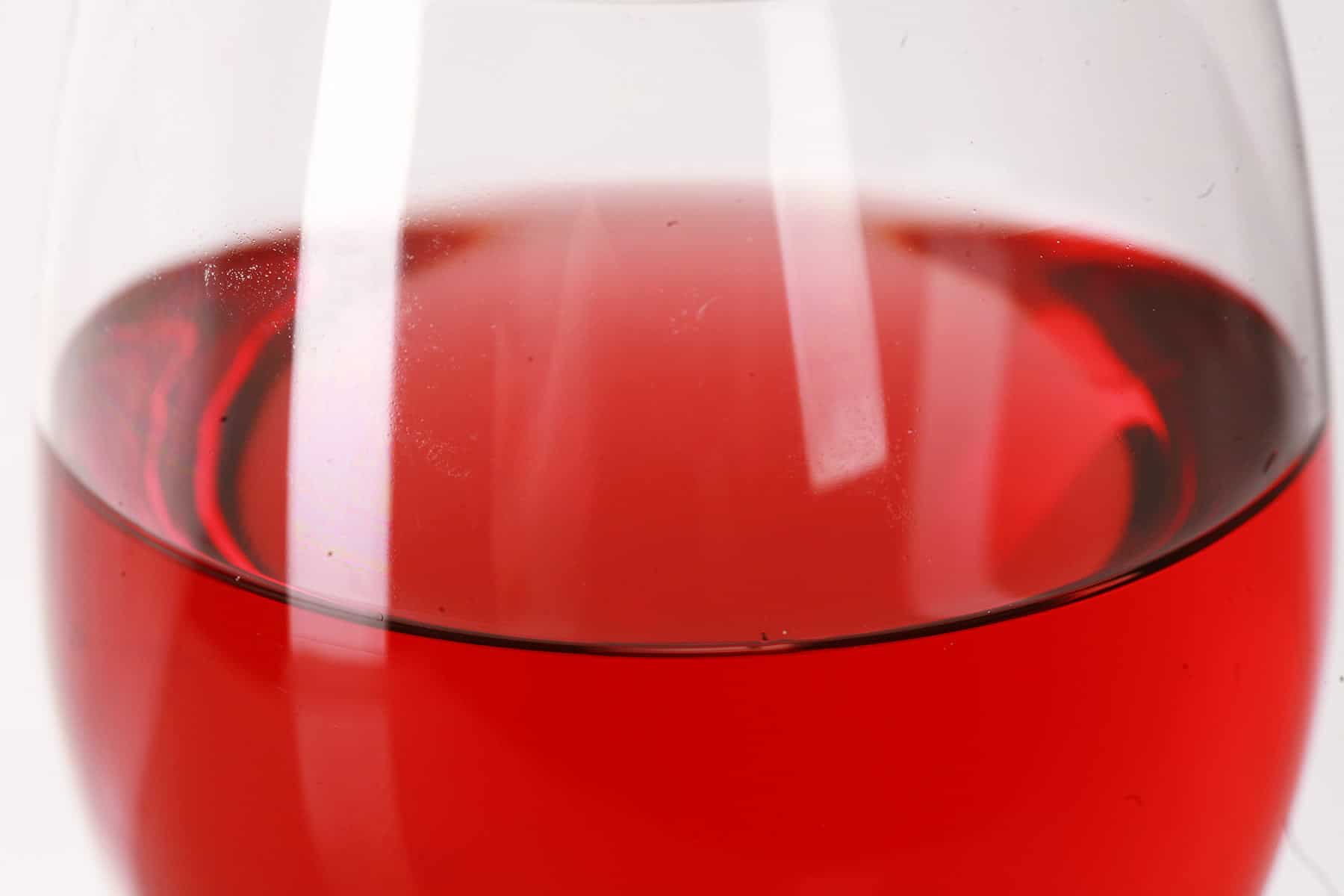
Carbonating Back Sweetened Wine or Cider
So, after really driving home the point that you have to stabilize a wine before back sweetening it, let’s talk a moment about the times when you DON’T necessarily want to kill off all the yeast:
Carbonated wines, meads, and ciders!
This is something you’ll want to plan out *before* you stabilize, as stabilizing renders you with only one of the two options for carbonation.
Naturally Carbonated Cider, Wine, Mead
- Skip stabilizing the wine.
- Sweeten the wine slightly more than you want, as some will ferment.
- Bottle into glassware that is made to withstand pressurized conditions. Usually, we’ll use beer bottles / caps for this, but a champagne setup is always an option as well - check with your local homebrew supply store to see what their options are.
- Allow to age at least a month or two – residual yeast will ferment the added sugar, carbonating the wine.
Force Carbonated Cider, Wine, Mead
-Stabilize the wine
- Rack the wine into a keg and force carbonate it, if you have the set up for that.
Aging your Wine
While aging wine isn’t specifically a part of stabilizing or back sweetening it, I wanted to address it here, as it is an adjacent issue, IMHO.
When you’re back sweetening wine, the sweetener taste - whether granulated sugar, brown sugar, or honey - can sometimes be discernable right off the bat.
Bottling and aging the wine for at least a few months lets that all mellow out and refine itself into a nicer beverage, in our experience.
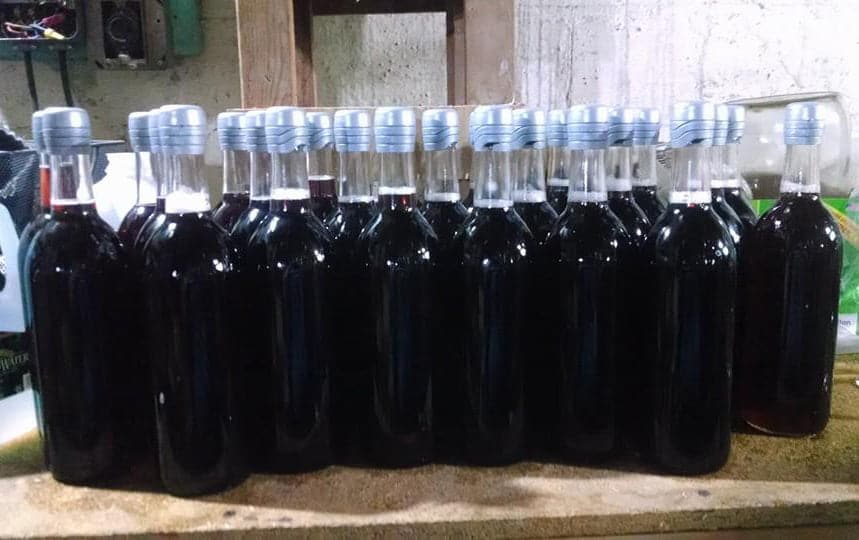
A 5 gallon batch of cherry wine, freshly bottled
Home Brewing Recipes!
Looking to get started with home brewing? Here are a few of my other wine, cider, and mead recipes:
Wine Recipes
Banana Wine Recipe
Blackberry Wine Recipe
Blackcurrant Wine Recipe
Blueberry Wine Recipe
Cherry Wine Recipe
Cranberry Clementine Christmas Wine Recipe
Cranberry Wine Recipe
Faux Lingonberry Wine
Lychee Wine Recipe
Mango Strawberry Wine Recipe
Mango Wine Recipe
Mint Wine Recipe
Lychee Wine Recipe
Partridgeberry Wine Recipe
Passionfruit Wine Recipe
Peach Wine Recipe
Stone Fruit Wine Recipe
Strawberry Wine Recipe
Ube Wine Recipe
Watermelon Wine Recipe
Mead Recipes
Black Cherry Mead Recipe
Blueberry-Clementine Mead Recipe
Blueberry Mead Recipe
Clementine Mead Recipe
Pumpkin Mead Recipe
Wildflower Mead Recipe
Cider & Miscellaneous Homebrew Recipes
Hard Apple Cider Recipe
Home Brew Hard Iced Tea Recipe
Maple Hard Apple Cider Recipe

Share the Love!
Before you drink up, be sure to take some pics of your handiwork! If you post it to Bluesky, be sure to tag us - @CelebrationGen. We're also on Pinterest, so you can save all your favourite recipes to a board!
Also, be sure to subscribe to my free monthly email newsletter, so you never miss out on any of my nonsense.
Well, the published nonsense, anyway!
How to Stabilize and Back Sweeten Wine
Equipment
- Carboys
- Siphon
- Wine Thief
Ingredients
Stabilizing Wine Ingredients
Back Sweetening Wine Ingredients
- Choice of sugar: White, Brown, Honey, Maple syrup
- or
- Juice optional
- or
- Glycerine optional
- or
- Wine Conditioner optional
Instructions
Stabilizing Wine:
- Consult the packaging on your stabilizers to figure out how much to use, and how it wants you to add them. Use the least amount of stabilizer that you can for the quantity of wine you’re stabilizing. Don’t throw extra in “to be extra sure” or anything!
- Sanitize a clean carboy, the same size as the one your still wine is currently sitting in. Also, sanitize your siphon, siphon tubing, etc.
- Rack the wine over one final time.
- Add your stabilizer - following the directions for it - swirl the carboy a little to mix it in.
- Allow the wine to sit for at least 12 hours (ideally severally days) before doing anything else (back sweetening, bottling)
Back Sweetening Wine - Wing It:
- First, mix a thick syrup with your choice of granulated or brown sugar, molasses, honey, maple syrup, or a mixture thereof. I like to go 2 parts of sweetener, to 1 part of water.
- Boil your syrup for a few minutes. You want your sweetener to dissolve, and you also want to sterilize it AND the water.
- Have the amount of wine you’re looking to sweeten in a single, sanitized vessel - usually the carboy you stabilized it in.
- Use a sanitized wine thief, turkey baster, or siphon to get a bit of the wine in a glass.
- Taste the wine, decide if you’re looking at needing a lot of syrup, or just a bit.
- Eyeball it and add some syrup to the carboy. You’ll want to underestimate, if anything. You can always add more syrup, but you can’t *un* sweeten a wine you went overboard with!
- Swirl the jug to mix it in well.
- Get a bit more wine in a glass, test it out. Add more sugar if needed, repeat as necessary - just be sure to keep everything sanitary!
Back Sweetening Wine - Meticulous
- First, mix a thick syrup with your choice of granulated or brown sugar, molasses, honey, maple syrup, or a mixture thereof. I like to go 2 parts of sweetener, to 1 part of water.
- Boil your syrup for a few minutes. You want your sweetener to dissolve, and you also want to sterilize it AND the water.
- Know how much wine you have to sweeten.
- Using sanitized equipment, remove a measured amount - say 1 cup, for the sake of easy math - to a clean vessel.
- Add a measured amount of syrup to your measured wine, say 1 Tbsp. Taste, and add more syrup if necessary - keeping track of how much you add.
- Multiply the final amount of syrup you added to your glass, by the amount of wine you’re sweetening.
- Example: If you liked the glass at 2 tablespoon of syrup, and you have 16 cups of wine left to sweeten, you’ll add 32 tablespoon - or about 2 cups - to the carboy.
- Add measured amount of syrup to the carboy, swirl well to combine.



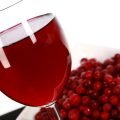







Paul Carpenter
I loved reading this thanks. Your writing is so so easy to read and flows so conversationally and wit honesty.
Paul
Douglas Whiters
I made wind a few years ago. In fact I bottle in 2017. The flavor was great but I got a sulfur order. It reminded me of Paul Mason wine which I detest.
Question. What cause that and how do I prevent it
Marie Porter
Probably contamination.